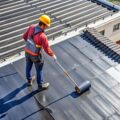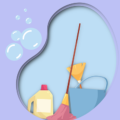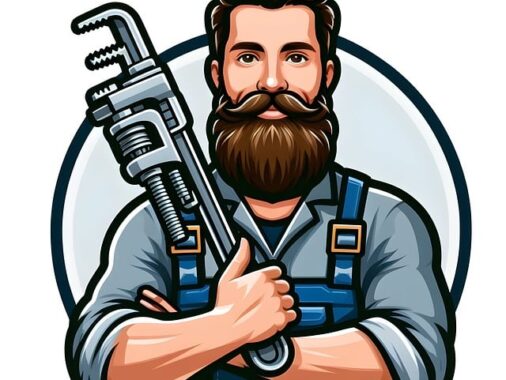Maintaining your home’s plumbing system is crucial for ensuring a smooth and efficient flow of water throughout your house. It can also prevent costly repairs and unwanted emergencies. While it may seem overwhelming at first, many common plumbing issues can be easily addressed with basic tools and knowledge. Below, we provide comprehensive DIY plumbing tips to help you keep your water systems in top shape.
1. Understanding Your Home’s Plumbing System
Before diving into maintenance or repair tasks, it’s essential to have a basic understanding of how your home’s plumbing system works. Water supply systems typically consist of pipes that bring water into the home and drain systems that take waste away. These systems can involve a network of fixtures, such as faucets, toilets, sinks, and bathtubs. Becoming familiar with your main shutoff valve, as well as key elements like the water heater, will help you stay in control in the event of leaks or other issues.
Key Areas to Focus On:
- Main Water Shutoff Valve: Locate and know how to operate this valve in case of an emergency. It’s often near the water meter or outside the home.
- Water Pressure: Maintain proper water pressure to avoid stressing pipes and fittings.
- Water Heater: Regularly check the water heater for signs of leaks or malfunction, and flush it yearly to remove sediment buildup.
2. Common DIY Plumbing Repairs
Certain plumbing problems can be easily fixed without calling a professional. Here are some of the most frequent issues and how to handle them:
Clogged Drains
Clogged drains are a common occurrence, especially in bathrooms and kitchens. To address this, start by using a plunger or a drain snake to clear the blockage. Avoid using chemical drain cleaners as they can corrode pipes over time. For sinks, remove the P-trap and manually clean out the debris.
Fixing Leaky Faucets
Leaky faucets are not only annoying but can waste a significant amount of water. The typical cause is a worn-out washer or O-ring. Disassemble the faucet, replace the worn part, and reassemble it. It’s a straightforward repair that can save both water and money on your utility bills.
Toilet Troubleshooting
Running toilets are another common issue. This is often caused by a faulty flapper or fill valve. Open the toilet tank, check for damage or improper sealing, and replace any broken components. A simple fix like this can stop the toilet from continuously wasting water.
3. Essential Tools for DIY Plumbing
Having the right tools on hand will make any plumbing task easier and more efficient. While some specialized tools might be necessary for more significant repairs, here are some essential items every homeowner should keep in their toolbox:
- Pipe Wrench: Great for loosening or tightening fittings.
- Plunger: Essential for clearing blocked drains.
- Drain Snake: Useful for dislodging tougher clogs in sinks, tubs, or toilets.
- Teflon Tape: Helps seal threaded pipe joints to prevent leaks.
- Adjustable Wrench: Versatile for working on various fittings.
- Plumber’s Putty: Seals leaks around drains and pipes.
By having these tools readily available, you’ll be prepared to handle most minor plumbing issues that arise.
4. Regular Maintenance Tips to Prevent Plumbing Issues
Proactive maintenance is key to avoiding unexpected plumbing problems. Taking a few minutes each month to inspect your plumbing system can prevent larger issues down the road. Here are some important maintenance tips:
Inspect for Leaks
Regularly check under sinks, around toilets, and near water-using appliances for leaks. Even small drips can cause major damage over time and lead to costly repairs. If you spot moisture or notice an increase in your water bill, it’s essential to investigate further.
Clean Drains Regularly
Don’t wait for a clog to develop. Regularly clean your drains by running hot water through them once a week. For kitchen sinks, consider using a mixture of baking soda and vinegar to break down grease and food particles.
Water Heater Maintenance
Flush your water heater annually to remove sediment that can accumulate at the bottom of the tank. Sediment buildup reduces the efficiency of the heater and can shorten its lifespan. Additionally, set the temperature to 120 degrees Fahrenheit to avoid scalding and improve energy efficiency.
Check Water Pressure
Too much water pressure can lead to stress on pipes, resulting in leaks or bursts. Use a water pressure gauge to check the pressure in your home. Ideally, it should be between 40 and 60 psi. If it’s higher, consider installing a pressure-reducing valve.
5. How to Thaw Frozen Pipes
During colder months, frozen pipes can be a significant issue, especially in unheated areas like basements, attics, and crawl spaces. If you suspect a pipe has frozen, turn off the water at the main shutoff valve and thaw the pipe using a hairdryer or heat tape. Avoid using open flames as they can damage the pipe or cause a fire. Once the pipe has thawed, check for leaks and consider insulating the pipe to prevent future freezing.
Preventing Frozen Pipes:
- Insulate pipes in unheated areas.
- Keep cabinet doors open to allow warm air to circulate around pipes.
- Let faucets drip during extremely cold weather to prevent freezing.
6. When to Call a Professional Plumber
While many plumbing issues can be handled with a DIY approach, some problems require the expertise of a professional. If you encounter a persistent leak, a blocked sewer line, or water damage that seems severe, don’t hesitate to reach out to a licensed plumber. Additionally, if you are dealing with a plumbing issue that you’re unsure how to resolve, it’s best to seek professional help to avoid further damage.
Signs You Need a Plumber:
- Water discoloration or strange smells coming from faucets.
- Sudden and drastic drops in water pressure.
- Frequent sewer backups or persistent clogs in multiple drains.
- Unexplained wet spots or water damage on walls or ceilings.
7. The Benefits of Proactive Plumbing Maintenance
Maintaining your home’s plumbing system isn’t just about avoiding emergencies—it also has several long-term benefits. By taking a proactive approach, you can:
- Save Money: Avoid costly emergency repairs and reduce your water bills.
- Improve Water Efficiency: Well-maintained systems use water more efficiently, reducing waste.
- Extend Lifespan of Appliances and Fixtures: Regular maintenance ensures that components like water heaters, faucets, and toilets last longer and operate more efficiently.
Conclusion
Taking a hands-on approach to maintaining your home’s water systems can save you time, money, and the stress of dealing with unexpected emergencies. By following these DIY plumbing tips, you’ll be better equipped to keep your water systems in excellent condition and resolve minor issues before they become major problems. However, don’t hesitate to seek professional help when needed to ensure the job is done right.




